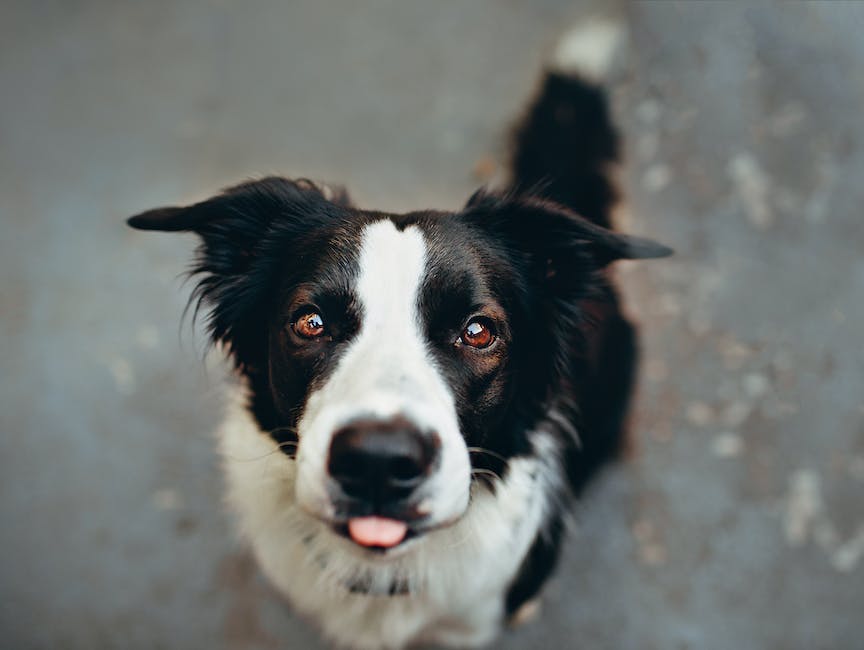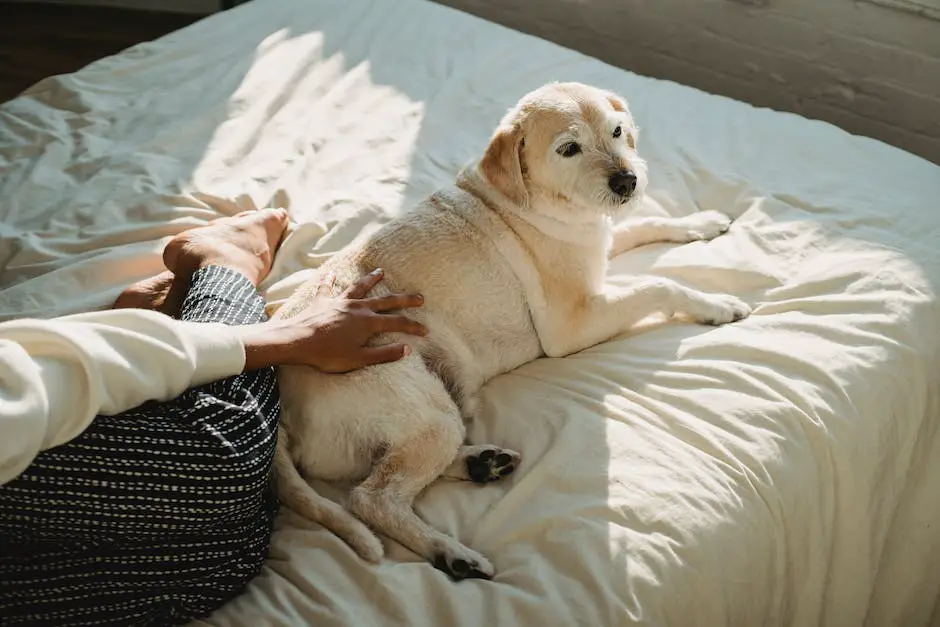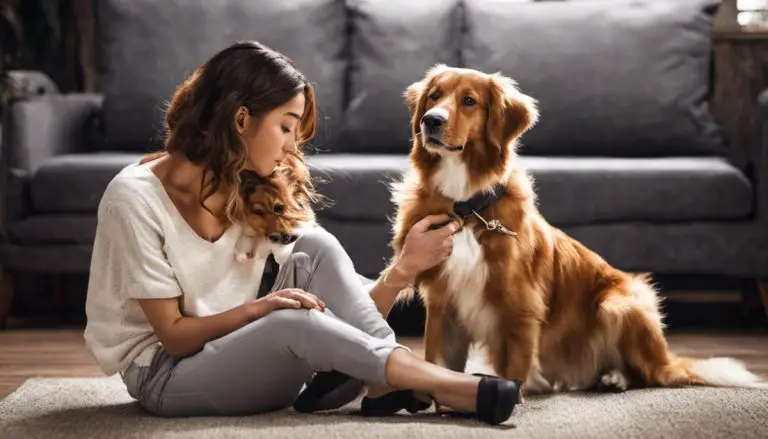As a dog owner, the joy of having a four-legged companion comes with the responsibility of understanding and addressing their behaviors. Sometimes, these behaviors may take a sudden shift, transforming a previously independent dog into an undeniably clingy one. This sudden change in behavior can be bewildering, but it is essential for all pet owners to remember that dogs, much like humans, experience a range of emotions and responses to their environment. This discussion explores the fascinating realm of dog behavior, intricately explaining what is considered as ‘clinginess’. It dives into the diverse signs of clinginess in dogs and the varying factors that can trigger this behavior. Furthermore, this exploration does not stop at identifying causes – it also provides practical solutions to help pet owners effectively manage their clingy dog.
Understanding Dog Behavior and Clinginess
Understanding Dog Behavior
Dog behavior is a complex area of study, as it encompasses their physical actions, emotional states, and changes in their daily routines. Canine behavior can be categorized into normal and abnormal behaviors. Normal behaviors are those performed by healthy dogs in reaction to certain stimuli, such as playing, eating, sleeping, and defending territory. Abnormal behaviors can be indicative of stress, discomfort, anxiety, or health issues.
An important aspect to be noted is that dogs are social creatures and they can form strong attachments with their human companions. What is view as ‘clinginess’ in humans may not be the same in dogs.
Identifying Clinginess in Dogs
‘Clinginess’ in dogs is essentially about the dog being more dependent or seeking extra attention than usual from their owners. Some behaviors associated with clinginess include following the owner around, excessive licking, continuous barking or whining for attention, avoiding being alone, showing signs of panic when the owner is out of sight, or constantly wanting to be physically close.
However, the degree of clinginess may differ from dog to dog. Considered a subjective behavior, a dog’s level of independence and confidence, as well as the bond it shares with its owner, can influence its level of clinginess. Changes in clinginess could also be related to changes in the environment or routine that might be making your dog feel insecure.
Why is My Dog Suddenly Clingy?
If a dog begins to display sudden clinginess, it could be because of various reasons. Health issues such as vision or hearing loss can lead to increased need for assurance from their owners resulting in sudden clinginess. Physical discomfort or pain could also be a reason, causing dogs to seek help and comfort from their owners.
Changes in the household, such as additions of new family members or pets, moving to a new location, changes in the owner’s work schedule or an unusually busy household, can all lead to feelings of insecurity and lead to clinginess. Prolonged separation from the owner can cause separation anxiety which often manifests as clinginess.
Moreover, aging and associated cognitive decline, often referred to as Canine Cognitive Dysfunction (CCD), can result in changes in behavior including increased clinginess. CCD can cause confusion and reduced independence in older dogs leading them to seek out the comfort and security of their owners.
Consulting with Animal Health Professionals
When your dog starts showing signs of clinginess all of a sudden, seeking advice from veterinarians or animal behaviorists can provide insights into the possible causes. They possess the knowledge and equipment to decipher if there’s a medical condition triggering your pet’s behavior. In addition to diagnosing any potential health problems, these professionals can suggest various ways to help your dog overcome their anxiety and regain their independence.
In case your dog’s sudden clinginess does not stem from a medical condition, you may receive expert advice on exercises or techniques to help foster a sense of security in your dog and mitigate their neediness. These can range from regular physical activities, engaging their mind, using positive reinforcement, and sometimes resorting to professional training methods or behavior modification medications.
Keep in mind that clingy behavior in dogs signals that something is off, and your pet is relying on you to understand and address their concerns. As a responsible pet owner, your main goal is to ensure their well-being, which often involves combining medical treatment, creating a better living environment, or altering their behavior to relieve their stress and foster happiness and good health.

Common Causes for Sudden Dog Clinginess
Potential Physical Health Problems Causing Clinginess
Clingy behavior in dogs can sometimes indicate physical health problems. Sudden onset clinginess could mean your dog is feeling sick or experiencing pain. This is especially true if they are dealing with longstanding or painful conditions like arthritis or gastrointestinal problems. Even simple issues like feeling cold could prompt dogs to seek additional contact. Older dogs, particularly those suffering from compromised hearing or vision, may also exhibit increased clinginess due to discomfort or disorientation. To ensure your pet’s health is not the root cause behind their unexpected demeanor, it’s crucial to schedule a thorough check-up with a vet.
Emotional Stress and Dog Clinginess
Another common cause of a dog suddenly becoming clingy is emotional stress or anxiety. This can be triggered by a wide array of factors, such as loud noises (like thunderstorms or fireworks), new people or animals in the home, or even a change in the dog’s routine. Dogs can also pick up on their owners’ stress, and mirror those emotions. Severe forms of stress can result in a condition known as separation anxiety, where a dog becomes excessively attached and anxious when away from their owners.
Change in Environment and Clinginess in Dogs
A change to a dog’s environment can also lead to sudden clinginess. It could be a physical change, such as moving to a new house, or more subtle changes like a rearrangement of furniture or a new pet in the house. These changes can cause dogs to feel insecure and fearful, triggering clingy behavior. Similarly, if there has been a significant change in the household, such as a new baby, a divorce, or a death in the family, a dog may become suddenly clingy as they sense the change and react to the shift in family dynamics.
Changes in Routine Leading to Clingy Dogs
Clinginess in dogs may also be triggered by a change in routine. Dogs thrive on consistency and predictability, so a sudden alteration to their daily routine can lead to increased reliance on their owners for security. This could be brought on by changes such as a new work schedule for the owner, a move to a new city, or a change in the time of day the dog is fed or walked.
Dog clinginess can be a layered and far reaching issue, often hinging on the dog’s attempts to counteract some form of physical discomfort, emotional turmoil, or environmental shift.

How to Effectively Address Your Dog’s Clinginess
Unfolding the Mystery Behind Dog Clinginess
Shifting behaviors in dogs, such as suddenly becoming clingy, may be grounded in various factors. This unexpected transition in behavior may arise from changes in the home environment, various health conditions, or reactions to stress and fear. Some dogs also show tendencies of increased dependency and clinginess towards their owners as they age. Thus, it is of the utmost importance to comprehend the potential causes behind the abrupt excessive attachment exhibited by your dog before exploring ways to manage it.
Professional Advice on Training Methods
According to professional dog trainers, implementing certain training methods could assist in dealing with a clingy dog. Encouraging independent play can be an effective strategy. This can be achieved by providing your dog with interactive toys that can be enjoyed alone. Additionally, reinforcing positive behavior by offering treats when your dog plays independently can also prove to be beneficial. Trainers also suggest setting boundaries for your pet, teaching them to remain calm and feel safe even when you’re not around.
Environment Changes to Consider
The living environment greatly impacts a dog’s behavior. Changes in the environment could be triggering this sudden clinginess. Making the environment more comforting and well-adapted to the needs of a dog can be helpful. Modification could include creating private, cozy spaces where your pet can retreat and feel secure. Strategically placing your dog’s belongings and toys around the house, and maintaining a quiet and peaceful setting, can make it easier for your dog to spend time alone.
Routines and Vet Consultations
Maintaining a routine could play a key role in dealing with a suddenly clingy dog. Dogs are creatures of habit, and sudden changes in routine can lead to stress and anxiety. Ensuring your dog has a consistent daily routine including feeding, exercise, and play times may ease their anxiety.
Seeking advice from a vet should always be considered when sudden behavioral changes occur. Certain medical conditions could cause your dog to be clingy. For instance, dogs with vision or hearing loss may become more dependent on their owners. A check-up can help rule out any underlying health issues that might be causing this change in behavior.
Appropriate Responses to Clingy Behavior
When observing sudden clinginess in your dog, our natural reaction might be to offer increased comfort and ease their stress. However, doing so can unwittingly encourage and reinforce the clingy behavior, if your dog starts associating it with more attention and care. It’s equally essential not to react negatively or punish your dog, as it could aggravate the problem. To deal with this, a balanced approach is key, with a mix of fostering independent behavior while also supporting them with appropriate comfort and care.

When to Seek Professional Help for Your Clingy Dog
Decoding Unexpected Clinginess in Dogs
Increased attachment or clinginess in dogs is usually an indication of separation anxiety, where the dogs present signs of distress and anxiety when they’re left alone. This condition is frequently caused by alterations in their usual environment or changes in lifestyle. If your dog exhibits sudden clingy behavior, it’s a potential warning sign that something could be wrong, physically or emotionally. The problem can range from benign issues like unfamiliarity with a new environment, to more serious health complications such as chronic pain or cognitive decline.
Clinginess as a Behavior Change: Indication of a Problem
Behavioral changes in dogs, particularly sudden clinginess, can potentially be a sign of several underlying issues. This could include anything from an evolving attachment to its owner, to physical discomfort or various forms of distress. Excessive clinginess could potentially result in anxiety disorders, which not only affect the quality of life for the dog, but could also lead to destructive behavior.
Identifying Excessive Clinginess in Dogs
Every dog is unique, and what may seem like clinginess in one dog could simply be a sign of affection in another. However, if the behavior exacerbates and the dog displays an unusual level of dependency, it might be time to consider professional help.
Excessive clinginess can manifest as being overly attached to a particular person, following them around constantly, or displaying signs of distress (like excessive barking, whining, or destructive behavior) when separated from them. Excessive drooling, panting, or compulsive behavior like pacing or trying to escape can also be indicators of a problem.
When to Seek Professional Help
If you’re seeing a sudden change towards clingy behavior, it could simply be a temporary phase. However, if the clingy behavior persists or escalates, or if it’s accompanied by other signs of distress or physical discomfort, it’s certainly time to consider professional help.
Ignoring or failing to address this issue could potentially lead to dangerous behavior, as dogs in distress may become destructive or aggressive. The extended anxiety experienced by the dog could also result in various health issues over time.
Veterinary Assessment for Clingy Dog
When you consult a veterinarian about your dog’s excessive clinginess, they’ll begin with a comprehensive examination. This will likely include a complete behavior history including the onset and extent of clingy behavior, medical history, living conditions, and any recent changes in environment or routine that could potentially trigger such behavior. The vet may also perform a number of diagnostic tests to rule out any physical conditions that could be causing the sudden clinginess.
The treatment plan will depend greatly on the cause of the behavior. Physical ailments will be addressed first, often bringing about an improvement in the dog’s clingy behavior. If the cause is identified as separation anxiety, the treatment plan may involve behavior modification tactics, environmental changes, and in some cases, medication. The veterinarian might also refer you to a veterinary behaviorist for further consultation. Trust your veterinarian and follow their advice closely. By doing so, you can help alleviate your pup’s distress and clinginess.

Having a deep understanding of your dog’s behavior, particularly when they suddenly express increased clinginess, is pivotal for their overall wellbeing. Equipped with this knowledge, you can better respond to your furry friend’s needs, whether they are physical health concerns or emotional stress situations. It’s crucial to remember the suggestions offered to address your dog’s clinginess should be balanced, nuanced, and not exacerbate the clinginess unnecessarily. As you navigate the puzzle of peculiar dog behavior, remember that seeking professional help when necessary is a sign of responsible pet ownership. By doing so, you not only ensure your dog’s emotional comfort but also strengthen your bond with them.





